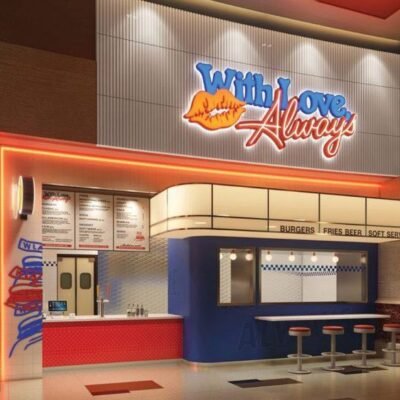LAS VEGAS (KLAS) — The most notorious serial killer in the history of Nevada eluded multiple manhunts that stretched on for years and was never brought to justice. Decades later, his remains were put on display, even taking a ride through Las Vegas as part of the Helldorado Parade.
He is known far and wide as “The Last Renegade.” His story ends at a concrete marker ravaged by time and the elements. It’s a barely legible remembrance for an outlaw described as Nevada’s last renegade Indian.
“He survived alone,” it reads.

The marker is adjacent to Cathedral Canyon in Nye County, accessible by a road with more potholes than pavement. Like so many stories about Nevada’s first serial killer, the marker has a few factual errors.
El Dorado Canyon is a historic mining district and ghost town that is very much alive. At its peak, it was a bloody, lawless boom town with a population ten times larger than tiny Las Vegas, but with no law enforcement. There’s a plaque in the canyon that serves as a nod to its most infamous resident.
“The Last Renegade,” known then as Queho, was reportedly shunned and tormented from birth by both whites and the area’s tribes because of his mixed blood. By 10, Queho worked odd jobs at the Techatticup Mine, the area’s largest and richest. Tony Werly, the owner of El Dorado Canyon, found Queho’s name on old payroll ledgers.
Queho would eventually be blamed for 23 murders, more killings than Billy the Kid. The first three murders supposedly occurred on a tribal reservation. The targets were men who laughed at Queho’s shame and physical deformities.
According to Bill Franz, author of the history-based book “Renegade,” Queho had a broken foot that was never fixed during his childhood working for the mine. He also has a double set of teeth, which attracted a torrent of cruelty.
“Being disabled and being an outcast, he didn’t fit in anywhere,” Franz said. “I think that contributed a great deal to his turning to a life of crime.”
Franz researched everything he could find in historical records, but then had to fill in some of the blanks. He tried to determine how many people Queho actually killed. For his part, the author thinks the number is actually half to two-thirds of what is alleged. He also thinks it’s likely that Queho visited Las Vegas looking for work.
At least two of the murders he is blamed for involved white businessmen who wronged him. On the day he committed two murders, Queho fled and encountered a husband and wife traveling on a deserted road. Their name was Reid, the grandparents of future Senate Majority Leader Harry Reid.
“They were acquaintances of Queho, but they didn’t have a long conversation,” Franz said. “He took off again.”
From that point on, Queho was a wanted man. An initial reward was offered, $500, dead or alive. Then $1,000, and later $3,000: a huge sum at the time.
In 1919, a woman named Maud Douglas was shot dead in her cabin. Werly said there was little doubt who killed her.
That was in 1919, when a woman named Maud Douglas was shot dead in her cabin. Trackers found Queho’s distinctive footprints on the riverbank. The prints are what linked Queho to 5 or 6 other killings, though he was blamed for many more crimes.
Werly and Franz both agree that Queho became an all-purpose boogeyman. Possees were organized, and Indian trackers were hired. Multiple parties of armed men spent months searching the mountains around the Colorado River. They all eventually gave up. Queho had vanished.
“Bounty hunters and others all tried,” Franz said. “Nobody was able to locate him. “
Eventually, the public assumed Queho had died. The marker in Nye County lists 1919 as his end, but “The Last Renegade” was very much alive. In 1940, 21 years after he vanished, a pair of prospectors accidentally found a cave, 2,000 feet above the Colorado River, and inside, they saw Queho’s mummified remains.

The guess was that he’d been dead for about six months. The remains were photographed and then reported in newspapers all over the West. The cave contained items that had been stolen from the Hoover Dam project during the 1930s, meaning Queho had survived, alone, in harsh conditions, and avoided not only capture but also all human contact for a very long time.
In a somewhat goulish twist, Queho’s bones were put on display and even carried in a convertible during the Helldorado parade.





